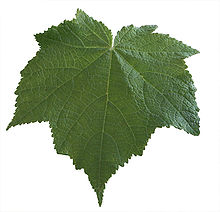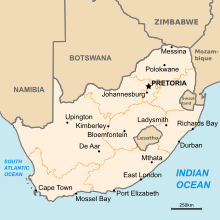Cape linden tree
| Cape linden tree | ||||||||||||
|---|---|---|---|---|---|---|---|---|---|---|---|---|

Sparrmannia africana |
||||||||||||
| Systematics | ||||||||||||
|
||||||||||||
| Scientific name | ||||||||||||
| Sparrmannia africana | ||||||||||||
| Lf |
The Sparrmannia Africana ( Sparrmannia africana ) is a plant from the genus of the room Linden ( Sparrmannia ) in the family of the Malvaceae (Malvaceae); it is native to South Africa. The plant, known as room linden because of its linden-like leaf shape, has become known as a popular indoor plant that has been in cultivation for over 150 years .
Origin of name
Botanical name
Described Sparrmannia africana first time in 1782 by jr Carl Linnaeus. , the son of Carl von Linnés . Anders Sparrman was the godfather of the botanical genus name of the Cape Linden tree. Sparrman was a Swedish doctor and botanist. He was a student of Carl von Linné and took part in James Cook's second voyage of discovery from 1772 to 1775 . Together with Carl Peter Thunberg he explored the South African flora and is likely to have discovered the Cape Linden tree and introduced it to Europe. The correct spelling of the botanical generic name was made binding in 1993 as " Sparrmannia ". However, the spelling of the name " Sparmannia " is often found .
German name
The German name refers on the one hand to the origin of the Cape linden tree , which is only native to the South African Cape country, and on the other hand to the striking resemblance of the leaves to those of the linden tree . The short form "Zimmerlinde" is also widely used as a German name.
Botanical description
Trunk and leaves
The Cape Linden tree is a multi-stemmed, tree-like shrub that can grow up to 7 m high in its home. The trunk lignifies very quickly, with the leaves shedding as the degree of lignification increases.
The leaves of the Cape Linden tree are simple and angular-heart-shaped in outline. The leaf margin is dentate. The leaves are light to medium green and have pronounced leaf veins . Striking features of the leaves are, on the one hand, the very dense hairs and, on the other hand, their size. Leaves of the Cape Linden tree can be up to 20 cm long and almost as wide.
Flower and fruit
The flowers of the Cape Linden tree have four white, not overgrown narrow sepals and four also white, not overgrown and significantly larger petals .
The stamens are more noticeable . They occur in large numbers around the inconspicuous carpel and are strikingly yellow-red in color. In their overall arrangement, they protrude from the open flower in a semicircular tuft. In the inner circles the stamina are fertile. Towards the outer circles, the stamens become partially sterile and are therefore functionally referred to as staminodes. Stamina and staminodia are both sensitive to stimuli (see chapter: Seismonasty) .
The numerous flowers are in an inflorescence , a bill umbel or Doldenthyrse organized. The main flowering period in its natural location is from January to March. Pollination is done by insects ( entomogamy ). The Kapland linden tree has a spiked-bristle capsule as a fruit . The design of the fruit also contributes to the spread of the seed. The spiky outer shell of the fruit is attached to the fur of passing animals by means of Velcro, which contributes to the spread of the fruit and the seeds it contains ( epizoochory ).
Seismonasty as a special pollination strategy
The stamens of the Cape Linden tree are capable of active movements ( nasty ) due to external stimuli . The movement stimulus occurs in the stamens of the room linden tree without contact through stronger vibrations ( seismonasty ). The central point of stimulation is the outside of the stamen base with active excitation transmission to the neighboring stamens. This often results in active and outward-directed stamen movements triggered by potential pollinators . This serves to strip off the pollen on the pollinator and thus its spread. Similar reactions can be found, for example, with barberry ( Berberis ), prickly pear cactus ( Opuntia ) or the knapweed ( Centaurea ).
Systematics
The Cape Linden tree ( Sparrmannia africana ) belongs to the Mallow family (Malvaceae) and is divided there into the subfamily Grewioideae. The well-known useful plant jute from the genus Corchorus also belongs to this subfamily . In addition to Sparrmannia africana, the genus of the Zimmerlinden ( Sparrmannia ) includes 6 other species and additional subspecies, the botanical nomenclature of which in the literature is not uniformly understood.
An earlier classification of the Cape Linden tree in the linden family (Tiliaceae) could not be maintained by recent molecular biological work. This also led to the fact that the linden family was also included or subordinated to the mallow family as a new subfamily Tilioideae.
distribution
As the German name already shows, the Cape Linden tree belongs to the diverse floral kingdom of the Capensis . The only area of distribution is the tip of South Africa with an area between Cape Town and Port Elizabeth . From a geobotanical point of view, the Cape Linden tree belongs to the so-called tall herbaceous corridors of the tropical African mountains in southeastern Africa.
Released as an ornamental shrub , but not naturally occurring, it can also be found in the western United States ( California ) and in South America ( Bolivia , here near La Paz at over 3000 m above sea level).
Use as an ornamental plant
history
Shortly after its discovery and first description , the Cape Linden tree was introduced to England in 1790 and shortly afterwards to the rest of Europe. It quickly grew in popularity and the first varieties emerged. In 1914 one could still read in Hesdörffer's handbook of practical carpentry : "Among the best indoor plants, the linden tree undoubtedly occupies a prominent position" . However, the changing living conditions in the course of the 20th century made the Kapländische Zimmerlinde again somewhat forgotten. In the 1980s it was "rediscovered" as a decorative leaf and flowering plant and is now very popular in the age of modern interior greening thanks to its many advantages.
Ornamental shapes
The most common cultivated varieties of the Cape Linden tree are:
- 'Flore Pleno' (also 'Flora Pleno') with double flowers.
- 'Nana' as a small form.
- 'Variegata' with white-green variegated leaves.
Seed nurseries also occasionally offer seeds of the related species Sparrmannia ricinocarpa .
Location requirements
The Cape Linden tree generally prefers a bright and cool location with higher humidity and, if possible, without direct sunlight. For wintering, the temperature should not exceed or fall below 8-12 ° C.
Propagation and Cultivation
The Cape Linden tree can be propagated by sowing. However, it is more common to use head cuttings or side cuttings from shoots that are as blooming as possible. Normal peat culture substrate with a slightly increased proportion of clay is suitable as a substrate . The repeated stripping of young shoots promotes the branching of the plant, after blooming a clear cut should be made. Planting out temporarily (in wire baskets) in gardens over the summer from May to September is also possible, here the plants can reach a height of 3 meters. The resting time of the Cape Linden tree extends from October to December, after which the weakly fragrant flower umbels appear from January to April.
Due to the large leaf mass and thus a high rate of evaporation - especially in summer - care must be taken to ensure a sufficient and regular water supply. The Cape Linden tree is therefore also well suited for hydroponics .
Plant protection and fertilization
Here the Cape linden tree differs only slightly from other leaf and green plants. An infestation with the Californian flower thrips ( Frankliniella occidentalis ) or the whitefly ( Trialeurodes vaporariorum ) is problematic . If the culture is too wet, there is a general risk of gray mold rot ( Botrytis cinerea ) in the soft-leaved plants .
Due to the high growth rates in the main growth phase, given good framework conditions, the Cape Linden tree needs regular weekly fertilization with a complex fertilizer.
Toxicity in linden trees
In the literature and in medical databases, slight irritations of the skin and mucous membranes from the thickly hairy leaves of the Cape linden tree have been reported. This partly leads to a classification of the plant as "slightly poisonous". It is unclear, however, whether these irritations are caused by chemical components of the linden trees and thus by any glandular hairs that may be present, or whether it is a purely mechanical stimulus. Studies in this regard from 1940 and 1958 did not produce consistent results, although a mechanical stimulus can be assumed to be more likely.
Others
The Cape linden tree has the same generic name as a species-rich genus of the scarab beetle family (Scarabaeidae), which also includes May and June beetles . The zoological genus Sparrmannia comprises 23 different species, some of which are also native to South Africa. Here, too, there are the two spellings “ Sparrmannia ” and “ Sparmannia ”.
The Cape Linden tree is also said to have a positive effect within the framework of Feng Shui teaching . As a plant with large, harmoniously shaped leaves, it should bring about a better flow of energy ( Qi ) in the interior design .
It is also recommended as a suitable indoor plant for indoor greening for a natural room climate improvement. Due to its large leaf mass and the resulting high evaporation rate, it is suitable for positively influencing the natural humidity in closed rooms.
literature
- Rüdiger Knapp: The Vegetation of Africa. Taking into account the environment, development, economy, agricultural and forest geography (= vegetation monographs of the individual large areas . Volume 3 ). Gustav Fischer, Stuttgart 1973, ISBN 3-437-30131-4 .
- Fritz Encke : cold and warm house plants. Species, origin, care and reproduction. A manual for enthusiasts and professionals . 2nd completely revised, expanded and redesigned edition. Eugen Ulmer, Stuttgart 1987, ISBN 3-8001-6191-5 .
- Fritz Encke : tub plants. History, origin, care . Eugen Ulmer, Stuttgart 1987, ISBN 3-8001-6332-2 .
- Walter Erhardt, Erich Götz, Nils Bödeker, Siegmund Seybold: Concise dictionary of plant names . Founded by Robert Zander. 16th edition. Eugen Ulmer, Stuttgart (Hohenheim) 2000, ISBN 3-8001-5080-8 .
- Peter Sitte , Elmar Weiler , Joachim W. Kadereit , Andreas Bresinsky , Christian Körner : Textbook of botany for universities . Founded by Eduard Strasburger . 35th edition. Spektrum Akademischer Verlag, Heidelberg 2002, ISBN 3-8274-1010-X .
Web links
- Tropicos.org - entry of Sparrmannia in the Nomenclatural Data Base
- Sparrmannia africana on BoDD - Botanical Dermatology Database - On the toxicity of Sparrmannia
- CliniTox - information system for pharmacotherapy and clinical toxicology
- senckenberg.de - Phylogenetic systematics of the Grewioideae




